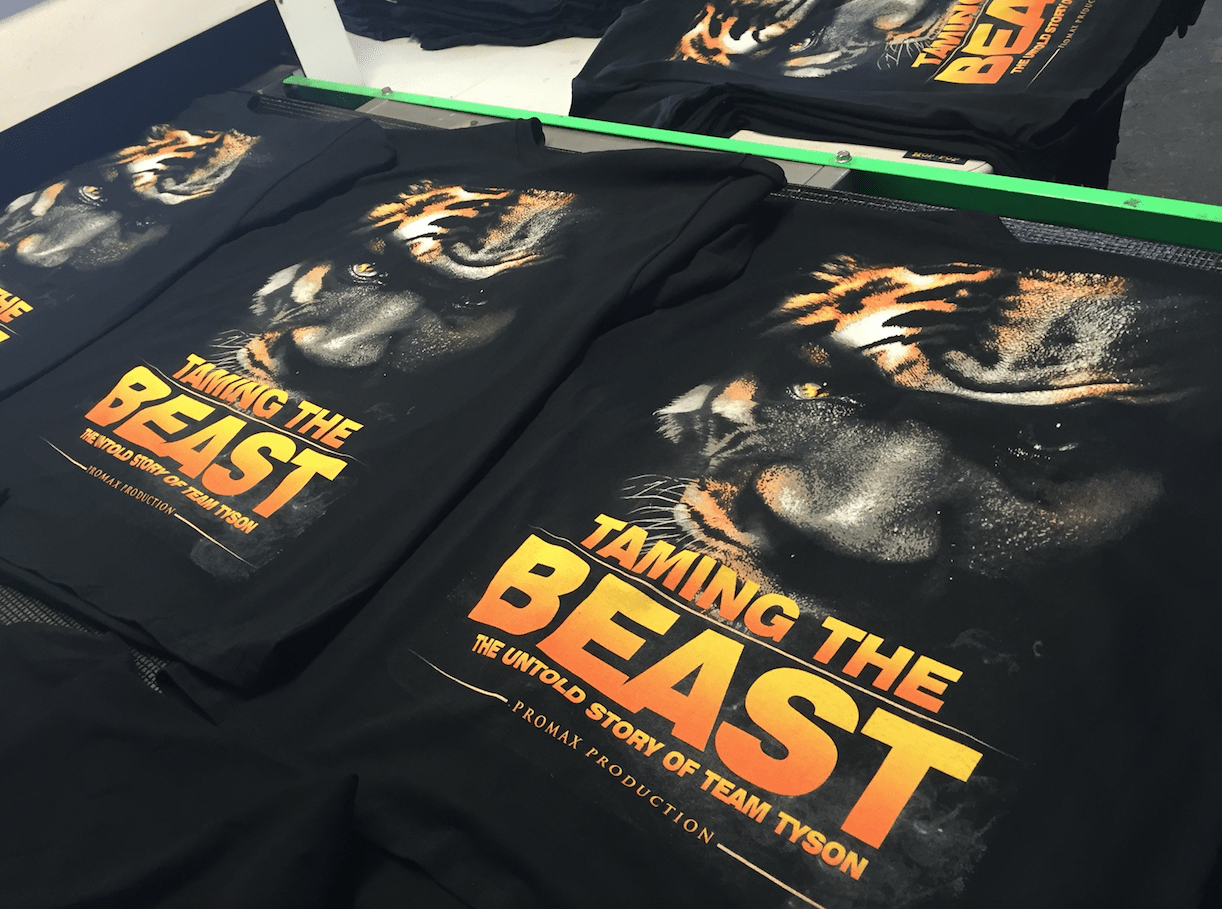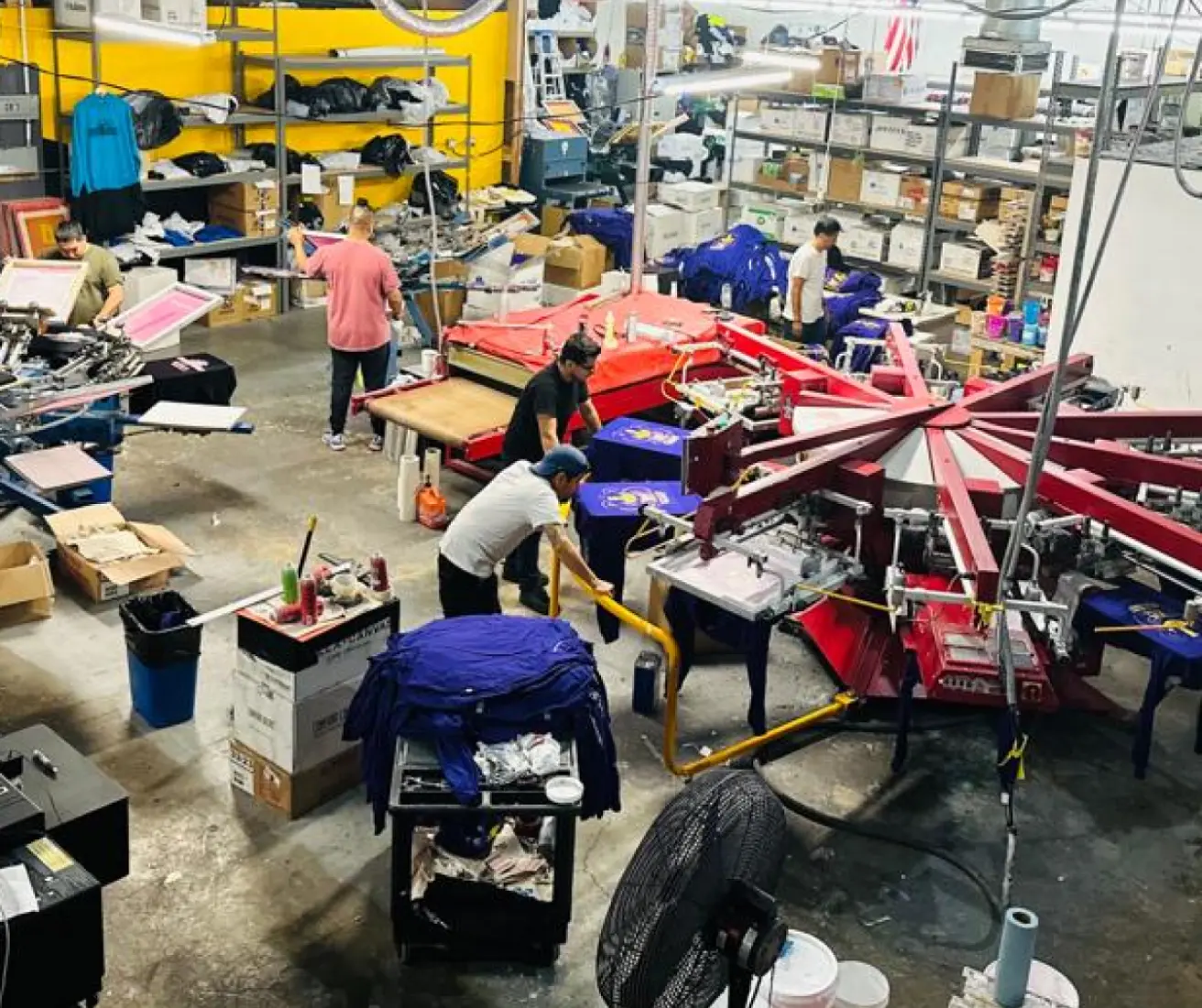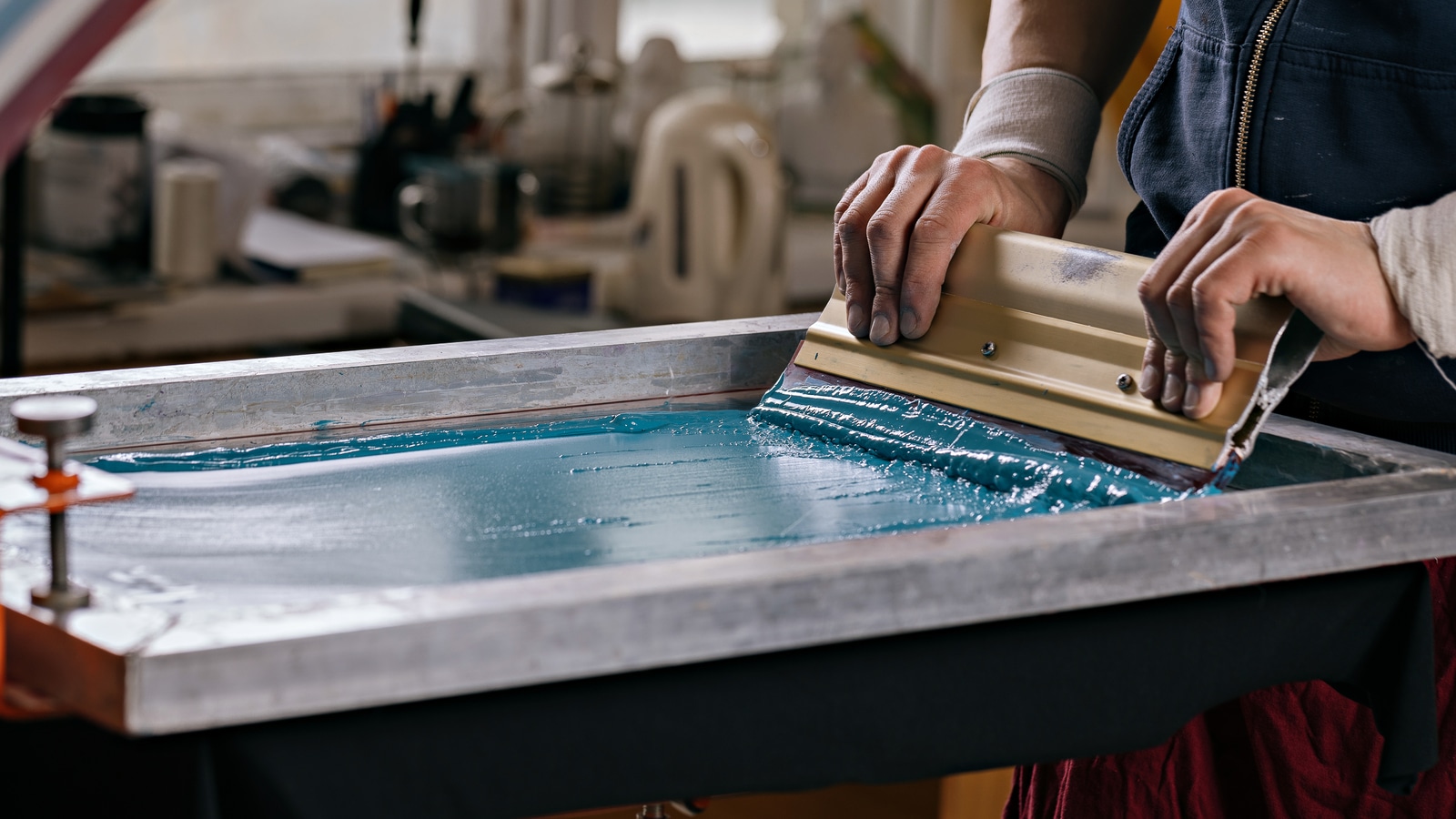Silk Screen Printing for Bold and Lasting Designs
Silk Screen Printing for Bold and Lasting Designs
Blog Article
Screen Printing Uncovered: Everything You Need to Learn About Tee and Garment Printing Techniques
Display printing is an interesting technique that incorporates art with method, supplying unlimited opportunities for creative thinking. Prepared to discover the important elements that make display publishing an art kind?
The Essentials of Screen Printing: Exactly How It Functions
When you plunge right into screen printing, you'll uncover it's both an art and a scientific research. At its core, display printing includes producing a pattern, or screen, that permits ink to go through only in certain locations (screen printing kit). You start by selecting your style and preparing your display with a light-sensitive emulsion. Once you expose this emulsion to light, it sets, leaving your layout as an adverse room.
Position the screen over the fabric, then use a squeegee to press ink via the display onto the garment. Each action is crucial, and grasping them will certainly elevate your screen printing abilities, transforming easy garments into unique, expressive items.
Kinds of Screen Printing Techniques
As soon as you grasp the basics of display printing, it's time to check out the numerous methods that can elevate your layouts. One popular approach is conventional screen printing, where ink is pushed with a stenciled screen.
If you're going for great information, think about discharge printing. This technique removes color from the textile, leaving a soft, vintage appearance. An additional alternative is plastisol printing, understood for its durability and vibrant colors, making it a favorite for several brands. Lastly, experiment with halftone printing to create gradient results and detailed designs. Each technique has its distinct appeal, so do not wait to attempt them out to discover what suits your style best!
Necessary Equipment for Screen Printing
To accomplish sensational results in screen printing, having the right devices is basic. You'll need a sturdy display printing framework, which holds the mesh that moves your layout onto the garment. Next, invest in high-grade squeegees; these are essential for using ink evenly throughout the display.
Selecting the Right Inks and Products
When choosing inks and materials for display printing, you require to take into account the sort of ink that functions ideal for your task. Assume about material compatibility to ensure your styles look terrific and last long. Additionally, discover green ink alternatives to make your printing procedure more sustainable.
Types of Display Inks
Selecting the best display ink is important for accomplishing dynamic, long lasting prints that fulfill your job's needs. There are a number of types of display inks to take a look at. Specialized inks, such as glow-in-the-dark or metallic, can add distinct results to your layouts.

Fabric Compatibility Considerations
Comprehending material compatibility is important for achieving top notch display prints, specifically considering that different materials respond uniquely to different inks. When selecting inks, consider the material type-- cotton, polyester, or blends. For cotton, water-based inks work well, offering gentleness and breathability. Polyester, on the other hand, often requires plastisol inks for better attachment and vibrant shades. If you're printing on blends, you could require to utilize a mix of both types. Constantly check your inks on example material to ensure they adhere properly and preserve shade integrity. In addition, remember that textile weight and texture can affect the last outcome, so selecting the best ink and material combo is essential for your job's success.
Eco-Friendly Ink Options
Environment-friendly inks are coming to be a prominent option for screen printers that desire to minimize their ecological effect while keeping top quality. When choosing inks, take into consideration water-based inks, which are much less unsafe and less complicated to cleanse up compared to standard solvents.
Furthermore, seek inks made from renewable sources, such as soy or vegetable-based choices. By choosing the appropriate inks and products, you'll not only produce stunning designs however also contribute to an extra sustainable printing procedure. Make the switch, and your prints will certainly reflect your commitment to the setting!
Preparing Your Style for Display Printing

File Style Requirements
To guarantee your layout looks sharp and vibrant on fabric, you'll require to pay very close attention to file format requirements for screen printing. Begin with vector files like AI or EPS, as they can be scaled without shedding high quality. If you make use of raster photos, go with high-resolution data, such as TIFF or PNG, preferably at 300 DPI. Avoid making use of JPEGs, as they can lose quality when resized. Make sure your design has a clear background to prevent unwanted white sides on your prints. Keep color settings in mind; CMYK is standard for display printing, so convert your RGB designs appropriately - screen printing kit. By adhering to these guidelines, you'll set your artwork up for an effective print.
Shade Separation Strategies
Shade separation is a necessary step in preparing your design for display printing, and understanding it can greatly boost your print top quality. You'll need to break your design right into private colors, as each color needs a separate display during printing. This precision not just assures exact color representation however also enhances the printing process.
Resolution and Dimension
Attaining the most effective outcomes in screen printing starts with guaranteeing your design has the right resolution and size. Preferably, your art work needs to be at least 300 DPI (dots per inch) for sharp, clear prints. Your last product could look pixelated and amateur. if you utilize lower resolution.
When it involves size, take into consideration the measurements of your print location. Style your artwork to match the final print size, ideally creating it in the actual measurements you'll be printing. By doing this, you'll stay clear of any type of unanticipated scaling problems.
Constantly check your style in both vector and raster styles. Vector graphics can be scaled without shedding quality, making them ideal for display printing. Preparing correctly will ensure your style looks outstanding on every garment!
Step-by-Step Display Printing Process
Display printing is a vibrant procedure that permits you to develop dynamic designs on different surface areas. To get started, you'll need a screen, solution, and your selected ink. Prepare your screen by cleaning it extensively. Next, apply the solution evenly and let it dry in a dark area. Once completely dry, reveal your display to light with your design positioned on it, which will harden the solution where the light hits, producing a pattern - screen printing kit.
After rinsing the unexposed emulsion, your screen is prepared. Establish it up on your printing surface area and straighten your garment underneath it. Put ink onto the display and use a squeegee to press the ink with the pattern onto the textile. Lift the display very carefully and allow the print completely dry. Ultimately, cure the ink utilizing warmth to ensure toughness. That's it! You've effectively display printed your design.
Tips for Successful Display Printing Projects
While you're diving into your display printing jobs, remember that preparation is crucial to success. Start by collecting all your materials-- inks, displays, mops, and garments. A clean office helps stop unwanted mistakes, so neat up before you begin.
Next, verify your art work silk screen printing is high-resolution and properly sized for your garment. Evaluate your display for correct exposure and clean it thoroughly to avoid smudges. When blending your inks, follow the manufacturer's guidelines to achieve the best consistency.
During printing, use also stress with your squeegee for consistent results. Don't rush; take your time to verify each print fulfills your requirements. After printing, let your garments completely dry entirely before managing or packaging them.
Lastly, always maintain a sample of your benefit future referral. In this manner, you can analyze your development and enhance your methods with time. Satisfied printing!

Regularly Asked Inquiries
How much time Does It Take to Establish a Display Printing Job?
Setting up a screen printing job typically takes about half an hour to an hour. You'll prepare the screens, mix inks, and readjust journalism. The time varies based upon complexity and experience, so stay arranged!
Can I Print on Different Textile Types Making Use Of the Exact Same Technique?
Yes, you can publish on different textile kinds making use of the same method, yet you'll require to readjust your settings and inks. Some materials take in ink in different ways, so trying out warranties the ideal results for each and every material.
What Prevail Blunders to Stay Clear Of in Display Printing?
When display printing, stay clear of usual blunders like utilizing the wrong ink, neglecting proper exposure times, or missing pre-press checks. Always examine your configuration and preserve tidy screens to ensure quality results each time.
Exactly How Can I Correctly Clean and Maintain My Display Printing Devices?
To correctly tidy and maintain your screen printing tools, you need to on a regular basis wash screens with suitable solvents, check squeegees for wear, and guarantee all devices are saved dust-free and dry. Uniformity prevents costly repair services and improves efficiency.
Is Display Printing Environmentally Friendly Compared to Other Methods?
Display printing can be a lot more eco-friendly than other approaches, especially if you utilize eco-conscious products and water-based inks. By choosing lasting supplies and practices, you reduce waste and minimize your influence on the world.
Screen Printing Uncovered: Whatever You Required to Know About T-Shirt and Garment Printing Methods
At its core, display printing entails creating a stencil, or display, that allows ink to pass with only in certain locations. Placement the display over the textile, after that make use of a squeegee to push ink through the display onto the garment. One popular technique is traditional display printing, where ink is pushed via a stenciled display.When choosing inks and products for screen printing, you require to take into account the type of ink that functions finest for your job.
Report this page